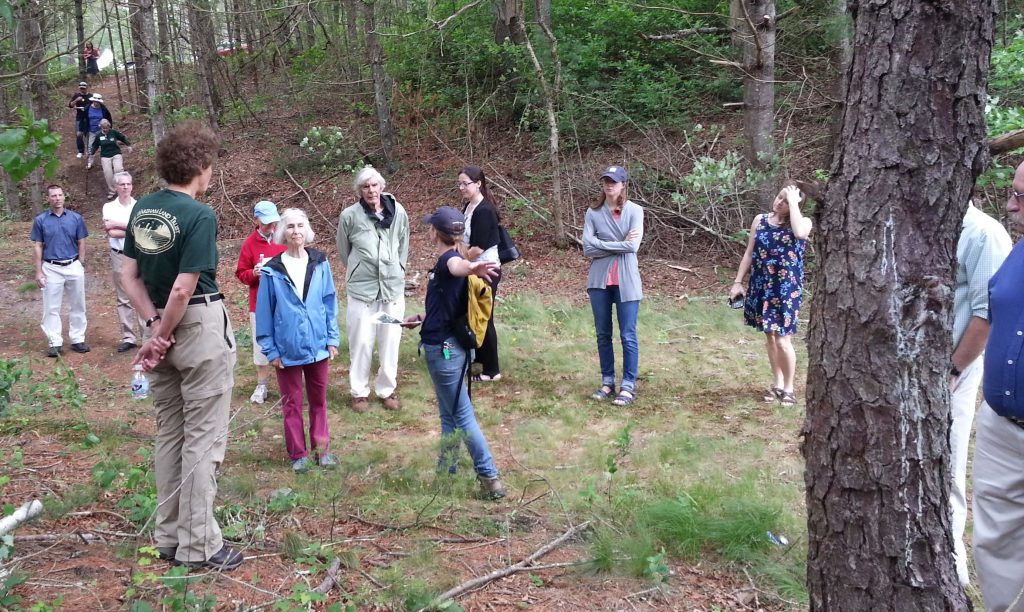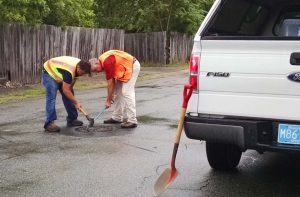
Wareham residents tour the Myers-Weweantic River land conservation project as part of the Father Bill’s & MainSpring housing for the homeless and those in need ribbon cutting event on June 19, 2017. Photo by Joe Costa.
In 2016, the Buzzards Bay National Estuary Program awarded $35,000 to the Town of Wareham as part of their efforts to acquire and protect 8.7 acres of open space, wetlands, and riverfront property along the Weweantic River. This project, which came to fruition in 2017, was novel in that it was part of a more elaborate effort that combined open space and wetland protection, public access and recreation, and affordable housing into one project involving multiple granting agencies and local partners. The Buzzards Bay NEP helped fund the wetland and open space protection elements of the project, resulting in the acquisition and protection of most of the ten-plus acre property by the Wareham Conservation Commission. An existing apartment building (4 housing units) was acquired and renovated by Father Bill’s & MainSpring (FBMS) with funding provided by the Wareham Community Preservation Commission and MassHousing. The building will provide housing for the homeless, and others in need. The Buzzards Bay Coalition, Wareham Land Trust, and FBMS coordinated on various elements of project. Kudos to John Browning of the Wareham Land Trust, Brendan Annett and Allen Decker of the Buzzards Bay Coalition, and John Yazwinski of FBMS, for working with the property owner, advocating the project at town meeting, and preparing grant applications. Besides funding, the Buzzards Bay NEP provided technical assistance in the form of maps used in the grant applications to other grant programs.
Congressman Bill Keating and State Representative Susan Williams Gifford were among those speaking at the event. Read more about this story at the Wicked Local Wareham site .
